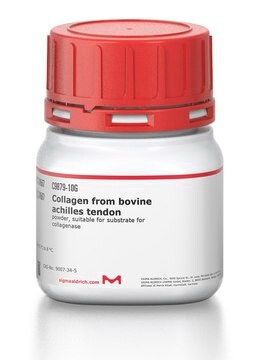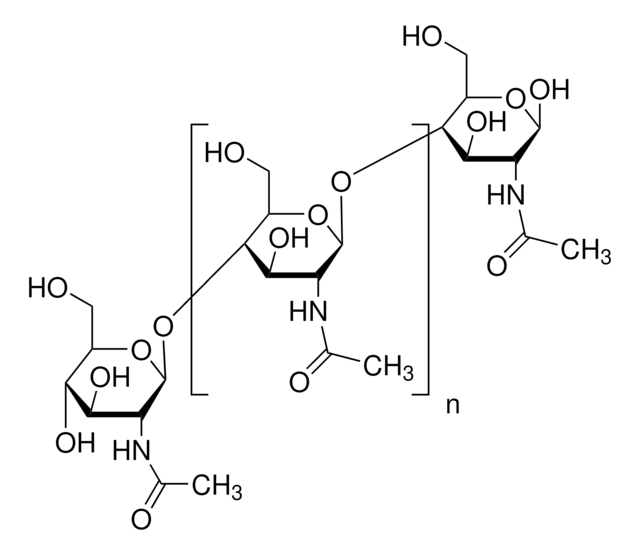740500
Chitosan
high purity, Mv 110,000-150,000
Synonym(s):
KiOmedine-CsU® C, Deacetylated chitin, Poly(D-glucosamine)
About This Item
Recommended Products
biological source
white mushroom
grade
high purity
form
powder
mol wt
Mv 110,000-150,000
composition
Bacterial endotoxins, ≤10 EU/g
Beta-glucan, ≤5 % (w/w)
Chitosan, ≥93 % (w/w)
Proteins, ≤1 % (w/w)
viscosity
5-200 mPa.s (1% solution in 1% HAc)
solubility
acetic acid: 1% (solution)
storage temp.
2-8°C
InChI
1S/C56H103N9O39/c1-87-56(86)65-28-38(84)46(19(10-74)96-55(28)104-45-18(9-73)95-49(27(64)37(45)83)97-39-12(3-67)88-47(85)20(57)31(39)77)103-54-26(63)36(82)44(17(8-72)94-54)102-53-25(62)35(81)43(16(7-71)93-53)101-52-24(61)34(80)42(15(6-70)92-52)100-51-23(60)33(79)41(14(5-69)91-51)99-50-22(59)32(78)40(13(4-68)90-50)98-48-21(58)30(76)29(75)11(2-66)89-48/h11-55,66-85H,2-10,57-64H2,1H3,(H,65,86)/t11-,12-,13-,14-,15-,16-,17-,18-,19-,20-,21-,22-,23-,24-,25-,26-,27-,28-,29-,30-,31-,32-,33-,34-,35-,36-,37-,38-,39-,40-,41-,42-,43-,44-,45-,46-,47-,48+,49+,50+,51+,52+,53+,54+,55+/m1/s1
InChI key
FLASNYPZGWUPSU-SICDJOISSA-N
Looking for similar products? Visit Product Comparison Guide
General description
The crystalline structure is in the alpha form. The linkage between glucosamine units is beta(1,4).
Application
Features and Benefits
Physical properties
Legal Information
Storage Class Code
11 - Combustible Solids
WGK
nwg
Flash Point(F)
Not applicable
Flash Point(C)
Not applicable
Choose from one of the most recent versions:
Already Own This Product?
Find documentation for the products that you have recently purchased in the Document Library.
Our team of scientists has experience in all areas of research including Life Science, Material Science, Chemical Synthesis, Chromatography, Analytical and many others.
Contact Technical Service



